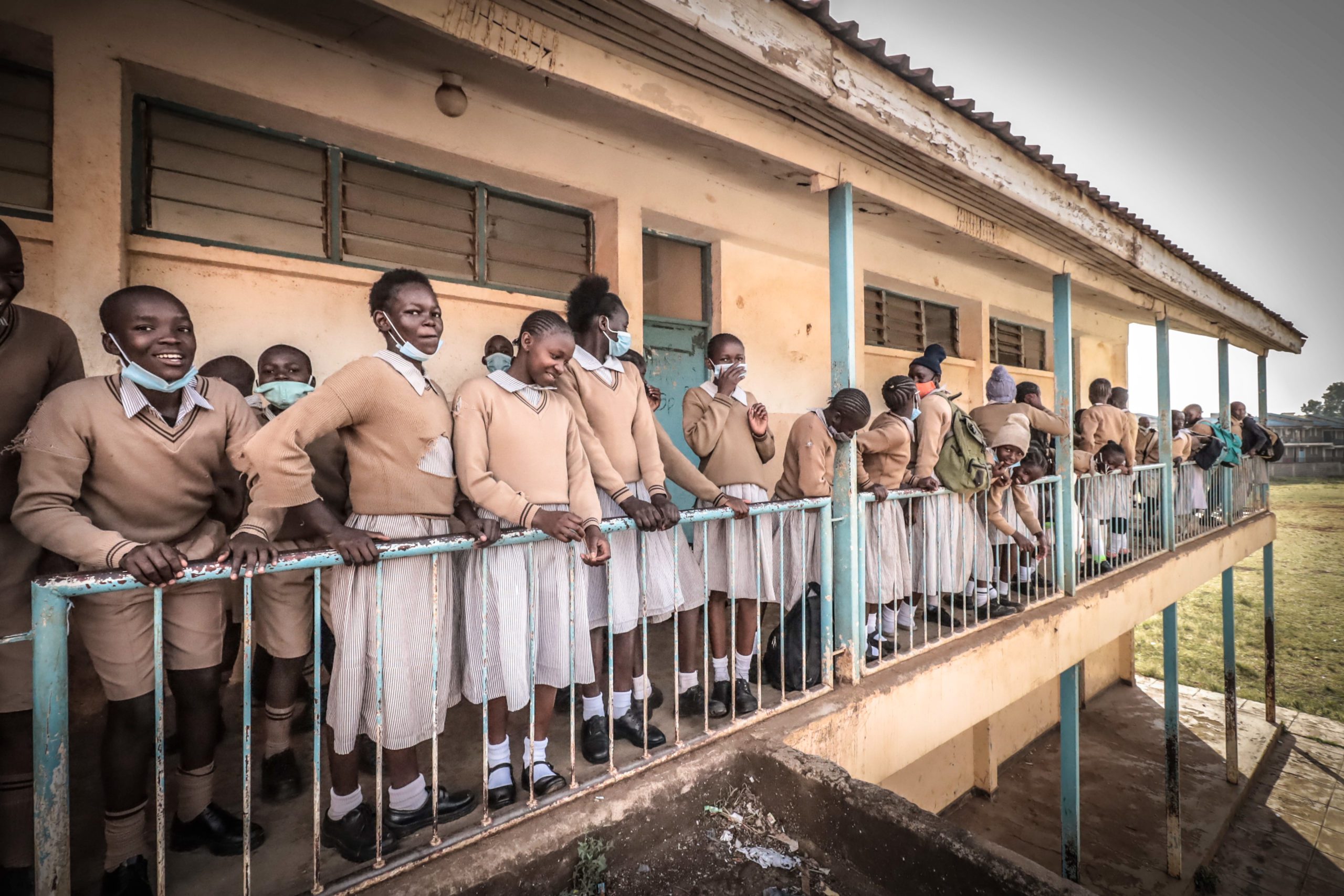
At its peak in 2020, COVID-19-related school closures affected more than 1 billion learners around the world. Girls’ education advocates feared the worst: Prolonged school closures and lockdowns would harm girls’ health and well-being, not to mention the continuity of their learning. The 2014-2015 Ebola outbreak in West Africa foreboded a cocktail of threats including sexual and gender-based violence, unintended pregnancies, forced marriage, and early transitions to work. Estimates projected that between 11 million and 20 million girls would not return to school after COVID due to these and other factors.
Have these fears been realized?
We look at the evidence so far—including from within a portfolio of research funded by Echidna Giving’s COVID-19 response fund—to answer this question. While the evidence draws primarily from sub-Saharan Africa, we offer generalizable advice to education systems around the world grappling not only with when they will reopen fully, but also how many more times they may need to shut down and reopen as new waves and new variants of the coronavirus spread. (Note: Dana Schmidt, senior program officer, and Erin Ganju, managing director, are employees of Echidna Giving, which provides financial support for the Center for Universal Education. Brookings is committed to quality, independence, and impact in all of its work. Activities supported by its donors reflect this commitment.)
Recent evidence from Senegal and Ghana suggests good news when it comes to girls’ reenrollment.
Both countries saw surprisingly low overall dropout rates (1.6 percent and 2 percent, respectively) when schools reopened in November 2020 and January 2021, respectively. In Senegal, there was no statistical difference between the dropout rate for girls and boys, and in Ghana, boys—especially from poor and rural households—were more likely to have dropped out than girls. Similar findings have also been observed in Ethiopia, Liberia, and Sierra Leone.
Nonetheless, this good news (for girls) is coupled with bad news for everyone in terms of learning loss, as reflected by grade repetition.
In Senegal, grade repetition nearly doubled from pre-COVID levels (rising from 6.3 percent to 11.4 percent). This was especially pronounced for students in exam years, or the last grade level of primary and secondary school. Meanwhile, in Ghana grade repetition nearly tripled from pre-COVID levels (rising from 3.5 percent to 10.5 percent), again with boys more likely to be repeating than girls. And in terms of numeracy scores, learning gains for both girls and boys in Ethiopia have slowed, with the gender gap narrowing slightly.
Although the aggregate statistics suggest that decades of efforts to normalize girls’ education are paying off, when you zoom in on adolescent girls, a more somber story emerges.
For many girls, COVID-19’s associated economic crises exacerbated gender inequalities that are more acute among older adolescents—from increased limitations on their freedom of movement to the need to care for younger siblings and perform household chores to the likelihood of being married off to relieve pressure on sparse household resources. When schools reopened after six months of closure in Uganda, 10 percent of grade 10 girls failed to return compared to 8 percent of grade 10 boys. Worse, 18 percent of grade 12 girls did not come back compared to 2 percent of grade 12 boys. A survey of nearly 4,000 adolescents living in urban settlements and rural counties in Kenya found that 16 percent of vulnerable adolescent girls compared to 8 percent of adolescent boys did not return to school when schools reopened in the country in January 2021.
The primary driver of dropout for girls has been economic—compounded by pregnancy.
A study of nearly 400 of the hardest-to-reach rural adolescent girls in Kenya, Rwanda, Tanzania, and Uganda found that 34 percent had lost a parent or guardian to COVID-19, 70 percent had to pursue income-generating activities, and 86 percent could not afford to return to school. Such economic precarity can drive adolescent girls into transactional sex to meet their basic needs. One study of adolescents in Nairobi, Kenya found that COVID-19 has increased young women’s financial dependence on transactional sex by 49 percent. Beyond economic precarity, the study of the hardest-to-reach adolescent girls also found that 29 percent of girls had dropped out of school during COVID. More than half of these girls dropped out because they were or recently had been pregnant. And of the girls who were planning to return to school, 30 percent were pregnant.
The mental health and psychosocial well-being of adolescent girls has quickly become a concern.
School closures, barriers to distance learning, economic insecurity, food insecurity, gender-based violence, and the health risks of COVID-19 have all increased adolescent girls’ concerns and feelings of hopelessness about their own educational futures. An earlier study of COVID-19 in Kenya found that older adolescent girls (15-19 years) were less likely to be engaged in distance learning, less confident that they would return to school, and more likely to experience symptoms of depression than younger adolescent girls (10-14 years). The aforementioned study on the hardest-to-reach adolescent girls in eastern Africa indicates high levels of academic anxiety among girls concerning their learning loss, the degree of remedial learning they will need, and the likelihood of having to repeat a grade and thus be much older than their peers.
Social stigma against teenage pregnancy magnifies these anxieties for many girls.
Pregnant girls who feel ashamed and fear being mocked by peers self-isolate further. For those who experienced sexual violence, the added trauma of abuse—oftentimes by men in their own household—adds another source of psychological stress and distress. Social stigma around their pregnancy not only puts them at greater risk of depression, but also places them even further out of reach from social support. Although communities in eastern Africa largely support adolescent girls returning to school, the situation is different for pregnant girls. Adolescent girls report how social stigma around teenage pregnancy mixes with a toxic school culture to push pregnant girls and school-aged mothers out of school.
COVID-19 is far from over, but we know enough about its impact to suggest immediate actions governments can take in response.
It is unclear which of the trends (both the positive and negative) that have emerged thus far will be sustained through repeated school closures and successive waves of COVID-19 variants. What is clear is that governments should factor the following into their COVID-19 education response and recovery plans:
- Disaggregate reenrollment data by gender, age, wealth, and other intersecting factors that may shape the consequences of COVID-related school closures. While aggregate studies point to a surprisingly low dropout rate among girls, those studies that looked specifically at adolescent girls point to a very different picture. Girls and boys of different ages, of different wealth strata, and from rural or urban households experience different risks and different expectations and pressures on their time. Decisionmakers must take seriously these intersecting constraints, vulnerabilities, and associated risks to education continuity and recovery.
- Weigh the health benefits of school closures against the known education, economic, social, and health costs—including the cost to mental health. The impacts of school closures on vulnerable segments of the population are severe and costly. Governments should factor in these costs when making decisions about school closures and find other ways to serve these populations if/when schools must be closed.
- Design and implement school reentry policies for pregnant girls. The Ministry of Education in Kenya has shown that school dropout need not be a pregnant girls’ destiny. During the first year of the pandemic, the country saw a 131 percent increase in the number of girls who completed their secondary school exams in the hospital after giving birth, rising from 282 girls in 2019 to 652 in 2020. Elsewhere, pregnant girls are de facto expelled from school.
- Address the education, economic, social, and health needs (including physical, mental, sexual and reproductive health) of adolescents. Emerging evidence clearly indicates how these needs intersect in complex ways, creating vulnerabilities that are especially unique to adolescent girls. Addressing these needs holistically—including through government and nongovernmental support, like cash transfers, in response to COVID-related job loss and food insecurity—will mitigate against the pathways that lead to adolescent girls’ unintended pregnancies and school dropout.
We are no longer dealing with hypothetical impacts on girls’ education. The studies highlighted above point to the ways COVID-19 has already disrupted the educational trajectories of adolescent girls in long-lasting ways. As COVID-19 continues to evolve, we must marshal these insights to dampen its ongoing effects on girls’ education.


